Giving Birth
International Debates in Theatrical Form
The BIRTH project consists of seven new plays written by Marcia Zanelatto, Xu Nuo, Swati Simha, Mῦmbi Kaigwa, Liwaa Yazji, Stacey Gregg, and Kirsten Greenidge from seven different countries (Brazil, China, India, Kenya, Syria, Britain, and the USA). Including accounts of mass sterilization in India, obstetric fistula in Kenya, and the aftereffects of China’s one-child policy, this feminist theatre initiative gives us access to “on-the-ground” stories of birth around the world, broadening our understanding beyond local battles. It is civic dramaturgy that allows for local taboos and injustices to be spoken about and interlinked to an international web.
Even in the United States, despite a library of advice books and a small industry of birthing information on the Internet, pregnant and postpartum mothers are bombarded with as much superstition and judgment as information and support. Navigating this often well meant torrent of advice can be daunting and isolating, and result in any difficulties they incur feeling private and shameful. When women’s stories of birth become forbidden or taboo, dangers increase for the mother and the baby. Simply putting these stories into theatrical form and affirming that birth stories can and should be told in public, is a radical and restorative act.
BIRTH is a joint venture conceived (so to speak!) in England by the Royal Exchange Theatre in Manchester, the Oglesby Charitable Trust, and the Centre for Maternal and Newborn Health at the Liverpool School of Tropical Medicine. The scientists and theatre artists collaborating to highlight global inequalities in access to health deliberately picked birth as a lightning rod that vividly reveals these inequities. In an introduction to the plays, Professor Nynke van den Broek of the Liverpool School of Tropical Medicine explains the urgency: “More than a quarter of a million women die each year in an attempt to give life and the awful reality is that many of these deaths are potentially avoidable.”
Simply putting these stories into theatrical form and affirming that birth stories can and should be told in public, is a radical and restorative act.
The Creative Director of BIRTH, Emma Callander, was tasked with commissioning the seven playwrights. In a video introduction to the project, she says that: “It’s a common phrase that theatre is going to raise questions rather than give answers, but I think in this context that’s really important.” Each playwright was asked to write about inequalities or issues relating to birth practices in their country. Within the plays, controversial birth practices are raised and discussed, but often deliberately left hanging so as to encourage conversation and action.
As the director of Theatre Uncut, Callander has years of experience commissioning plays intended to incite debate. Theatre Uncut has commissioned short plays from playwrights such as Neil LaBute, Mark Ravenhill, Lucy Kirkwood, and David Greig as vehicles for discussion about such political issues as cuts to public spending and national identity. The commission process for BIRTH builds on the Theatre Uncut model. The only restrictions Callander reports giving to the playwrights were that their play should utilize a maximum of five actors (doubling allowed) and be a maximum of seventy minutes long. The plays were all written in the countries that they reference and each writer met with scientists, educators, parents, and health care experts in the process of writing the pieces. The writing processes and resources have been beautifully documented by the playwrights on the project’s website. (Click on each individual play in order to get to the video blogs and interviews of the playwrights.)
Each playwright was asked to write about inequalities or issues relating to birth practices in their country. …controversial birth practices are raised and discussed, but often deliberately left hanging so as to encourage conversation and action.
In this era of continued gender inequality in theatre it is worth noting that BIRTH granted full commissions for seven female playwrights at the same time. The plays, often performed in repertory with an ensemble cast, circle around female stories and the cast on stage is overwhelmingly female. In 2017, this shouldn’t be a radical observation, but it is especially empowering in an era when our access to reproductive health is being controlled by a predominance of male voices.
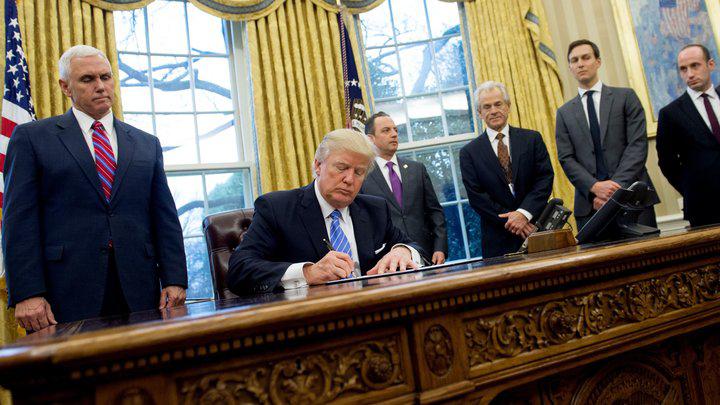
This fact is underlined in the opening scene of UK playwright Stacey Gregg’s play Choices, a solo multi-character piece often performed by the playwright with direct address to the audience:
We’re all at a play.
The play is happening in Northern Ireland.
It’s quite a traditional play. There’s a fourth wall and lots of people pretending they can’t see us and pretending to be someone else on a stage with a set.
The play is about men. Or, there are only men in it anyway. Tough men. It’s a good play. You can hear a pin drop. A man is talking about when he was younger and had sex with a woman his mates had set him up with.
He’s doing a monologue. About how he discovered later that the woman had gotten pregnant. How she’d had an abortion.
The woman isn’t in the play, so we don’t know how she felt.
Gregg goes on to tell the story of Oona, an Irish woman who was in the aforementioned audience and her recent trip to England for an abortion (which is illegal in Ireland). This story is intertwined with that of Hollie, a single woman going through IVF procedures and the tragedy of miscarriage. The stories are personal and told in third person with constant interjections that remind us that the storyteller (unlike the playwright referenced in the opening) sees us and recognizes that we all have our own stories. This self-conscious narration enables her to confront truth directly: “You may have noticed the absence of births so far. Non-birth stories aren’t as popular. They’re kind of hidden in plain sight.”
Chinese playwright Xu Nuo also deals with women’s choices in her play titled A Son Soon (translated into English by Jeremy Tiang). Here two modern Chinese women caught between new world opportunities and patriarchal demands, have an appointment with a traditional healer. Even though they are both wealthy and educated, their major concern is pleasing their husbands and extended family. Li Xiao, a registered nurse, is attempting to confirm that this second child she is carrying is a boy, while Gan Wei wants to embark on a fourth pregnancy in an attempt to stop her husband from divorcing her.
In their online web diaries, many of the playwrights discuss how their own experiences of birth influenced their desire to be part of this project. Brazilian playwright Marcia Zanelatto went so far as to center her play on her own trauma of an unnecessary cesarean section at a hospital setting in contrast with her grandmothers’ and great-grandmothers’ experiences of home-based births aided by traditional midwives. In her play The Birth Machine (translated by Mateus Ciucci), we travel through a “historic panorama” of generations of women in the same family who all offer poetic meditations on their birth experience, closely linking to the earth and spirits of the land. The overwhelming problem of babies born with microcephaly because of the zika virus in Brazil is only acknowledged in a coda to this otherwise personal play. This is perhaps the inevitable result of the impossibility of a mandate to encapsulate the inequalities of birth in a whole country into one play.

Although all are based on true stories, the only verbatim play in the collection is written by Mῦmbi Kaigwa from Kenya who interviewed doctors, community leaders and women affected by fistula, (a childbirth injury that leaves a hole between the vagina and rectum or bladder causing severe incontinence and often pain and social ostracization). Kaigwa places her own reflections as the interviewer on the stage in the form of a narrator: “I hear many stories…It opens up a whole world of horror that I was previously not aware of, that I’m not even sure should be shared with the world.” Even though fistula during birth happens all over the world where women are giving birth without the aid of trained medical professionals (and is even more common where female circumcision is practiced), Kaigwa worries about foreign audiences connecting it with Kenya through her play. In her interviews, she is careful to stress the developments in Kenyan medical health and her narrator in the play continues to question the process of giving a more public form to these stories:
It’s so brutal what these women have gone through, so horrible, so private. Meeting and listening to, and recording these ladies, and then transcribing their interviews, and then translating them from the original languages in which they were told, it’s hard to see how to inflict this violence on an audience. And yet, isn’t it important that people know?
This same question could be asked of Indian playwright Swati Simha’s script. Titled Ouroboros (after the ancient circular symbol of a snake devouring itself) it is set in a sterilization camp in Jharkhand. The protagonists are two Adivasi women who have been killed by the procedure and are known only by the numbers seven and thirteen, indicating the presence of many more unnamed and unvoiced victims, but the story is told through the perspective of Rima, a new doctor who like us, (at least for the audience I watched the play with in Edinburgh) is an outsider.

A similar feeling of revelation to an outside audience frames Questions and Questions, the Syrian play by Liwaa Yazji (translated by Clem Naylor). Yazji, who has asylum in Germany, travelled back to Syria to interview family members and other women on both sides of the conflict about their experiences with sex and birth in war and as refugees. Her play depicts three Syrian women being questioned in different circumstances (by an interrogator, a doctor, and a foreign aid worker) in parallel stories. They are alone, and the irony of creating life in a place of danger and death is ever present:
The fighting outside was loud. Bombs. And buildings collapsing. And the child was hanging on and wanted to come out. Night felt like day from the light of the rockets. Bullets. People being driven away. People running. And he wanted to come into the world and see it for himself. Some days I felt like he was doing it out of spite. He wanted to be alive. So I gave up. I felt like maybe there was a reason. It was the only way to create something meaningful out of everything meaningless around us.
By the end of the play, the three women are gone and we are left to confront their empty chairs, a physical reminder of the people who are not able to be present, who don’t have the luxury to engage in the conversation.

When it came to the United States, Callander knew that she wanted to center on the African-American experience. The maternal mortality rate of black women in the USA is still nearly four times higher than that of white women. Callander was inspired to reach out to Boston-based playwright Kirsten Greenidge after reading her play Milk Like Sugar wherein teenage girls speak in their own language about sex, motherhood, and the culture of purity in America. Greenidge researched the history of birth in the United States over the twentieth century, and ultimately centered her play So Far As a Century’s Reach on two African-American pregnancies a century apart from each other. But she soon found that even interspersing these two stories didn’t give enough of a vantage point:
I knew I needed the piece to broaden in scope to include more history than those stories’ arcs might be able to hold without having to rely on exposition, so I included the Recollections—ways for us to get bits of history and perspective to discuss this idea of choice—who has it? Who does not? What can surprise us about the ways choice lies in front, behind, or beside us?
The first performances of the BIRTH plays were at the Royal Exchange Theatre in Manchester, England in 2016 October as part of an event that included panels and debates on world health inequalities featuring experts from the world of science, art, academia, and politics. The plays were cast with a rep company of actors playing across ethnicities so that the same faces were seen in different stories. The set was stark; chairs and a space for projection of figures, place names, and sometimes video footage from the country in question. Scripts were held and the playwrights were often in the audience. Callander invited representatives from charities that spoke directly to the topics in the plays, but told them that after the play they were allowed to offer other audience members information or tell them about volunteer opportunities, but they were not allowed to canvas for signatures or fundraise. As a result, she found a lot of networking happening as the audiences focused on the issues and how this new writing could facilitate conversations already happening in the field.
Two subsequent productions of these plays have, by contrast, happened in the context of well-known theatre festivals. Last August, four of the plays were produced in repertory as staged readings at the Edinburgh Festival Fringe, under the umbrella of the Traverse Theatre’s annual breakfast plays. This series already has a following amongst theatregoers interested in new work, and so the audience was less focused on the overarching injustices and more on the personal stories being relayed. Having said that, So Far As a Century’s Reach was the only performance that I saw at this year’s fringe that ended, not in a conversation about the quality of the theatre, but in a spontaneous swapping of birth stories amongst myself and two women seated next to me. Perhaps this was because of Emma Callander’s pre-show introduction or the bare bones nature of the reading, either way the intention of the performance was striking in its impact. Choices was then performed at this year’s Dublin Fringe Festival in September in Ireland: a play about abortion in a country that is currently anticipating a referendum on the subject. Callander describes the audience as “hot” and reported that the fact that the play is set in Britain allowed the Irish audience enough distance to be able to discuss and reflect on the character’s decisions in that play.
As for future productions or festivals, the scripts are currently open, free, and available to anyone who requests them. However, productions are restricted to “charities, educational organizations, and NGOs to use as tools to raise awareness and encourage debate.” The exclusion of theatres from this list is a deliberate attempt to keep the birth debate grounded in reality—less about getting the rights to premiere the latest Kirsten Greenidge play, more about utilizing well written plays to bring individual stories and emotional truths that theatre raises into the education of birth providers and decisions of policy makers.

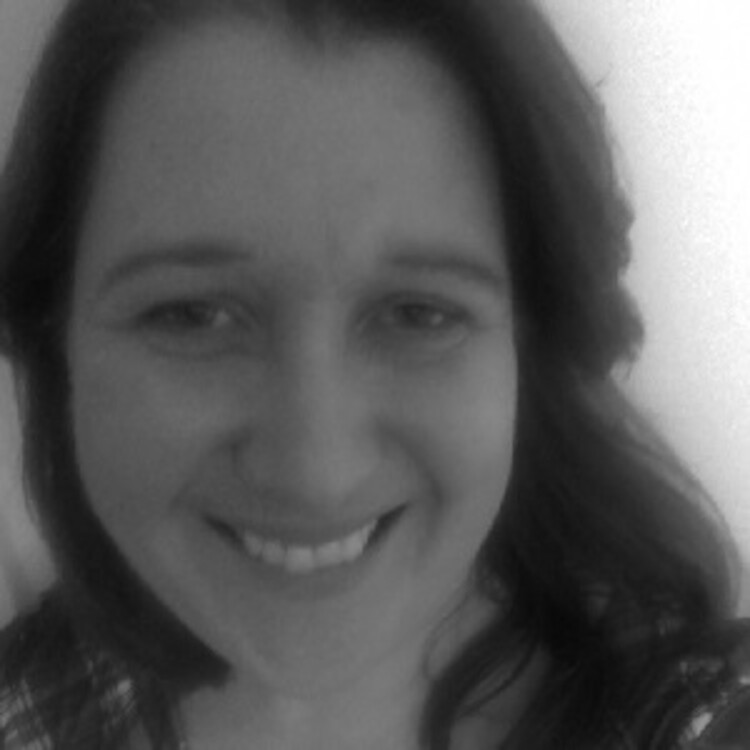
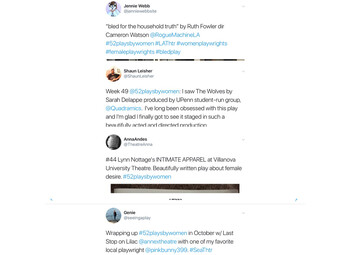

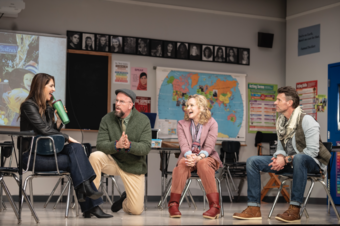


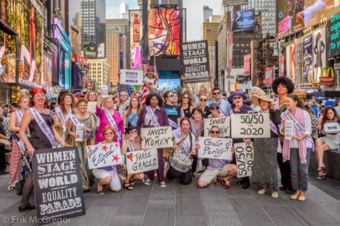

Comments
The article is just the start of the conversation—we want to know what you think about this subject, too! HowlRound is a space for knowledge-sharing, and we welcome spirited, thoughtful, and on-topic dialogue. Find our full comments policy here
Thank you so much for this article. We have found a rich and engaged audience in sharing the stories of reproductive freedom, rights, health and justice through touring stories in Words of Choice and live streaming them in the Reproductive Freedom Festival. They are stories filled with drama, humor, poignancy and resonance. We need more and more.
Thanks for this article, I have a one woman show Mamahood: Bursting into Light that I have written and perform about my post partum experience. Would love to connect with this network of amazing & important stories.
http://www.nicollenattrass....
Hi Nicolle! Your play looks fascinating. All the work the BIRTH project has used so far has been commissioned, but who knows? You can contact them directly via their web-page: http://www.birthdebate.com/...